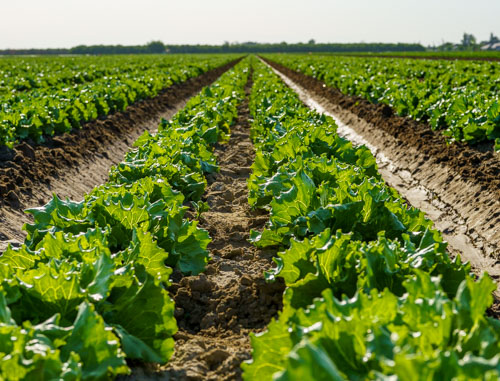Food safety in farming is an ongoing challenge for farmers and consumers alike. Foodborne illnesses can cause serious health problems and economic losses for farmers, producers, and customers. Food safety starts out on the farm field by following good agricultural practices (GAPs).
GAPs are science-based guidelines for food safety in farming that cover all aspects of food production, from soil and water quality to pest and disease management, to harvesting and handling, to processing and packaging. GAPs help farmers reduce the risk of harmful bacteria, viruses, parasites, toxins, and chemicals that can cause food poisoning.
Examples of good agricultural practices in food safety

- Testing irrigation water for pathogens and pollutants
- Using compost and manure safely and properly
- Washing hands and equipment before and after handling produce
- Keeping animals and wildlife out of planted crops
- Cooling and storing perishable products at appropriate temperatures
- Labeling and tracing products throughout the supply chain
- Training workers and volunteers on food safety principles and practices
- Thorough record keeping of all activities happening out on the field
By following GAPs, farmers can ensure that their grown food is safe, healthy, and nutritious for consumers. Farmers will also improve their market access, competitiveness, and profitability by meeting the food safety standards and expectations of buyers, regulators, and certifiers.
Available GAP resources for farmers
To help farmers implement GAPs, USDA’s National Institute of Food and Agriculture (NIFA) supports various programs that provide education, training, technical assistance, and research on food safety. For example, NIFA’s Food Safety Outreach Competitive Grant Program (FSOP) funds projects that tailor food safety education to the needs of small to mid-size farms, beginning and underserved farmers, and small-scale wholesalers. NIFA also supports multi-state research teams that develop innovative technologies and solutions for food safety challenges.
Food safety in farming is a shared responsibility between farmers and consumers. By working together, we can ensure a safe and sustainable food supply for everyone.
Farm management software for food safety
Farm management software can help farmers improve food safety by providing tools for tracking, monitoring, and documenting various aspects of their operations. For example, farm management software can help farmers record the use of spray products, fertilizers, and water on their crops, as well as the harvest dates, storage conditions, and transportation methods of their products. These records can help farmers comply with food safety regulations, identify, and prevent potential hazards, and trace the source of any contamination in case of a recall. Farm management software can also help farmers access and analyze data on their performance, quality, and profitability, which can help them make informed decisions and improve their practices.
If you are exploring farm management software options, please take a look at AgNote. AgNote is a practical tool for busy farmers and farm managers. AgNote includes features which will directly help you with food safety data tracking on your farm. Features such as:
- Crop scouting
- Completed field activity tracking
- Spray application tracking
- Functionalities for organic crop management
- Water quality tracking and much more
You can try AgNote free for seven days, to see if it is the right tool for your farm management. Register today and take AgNote for a test spin!